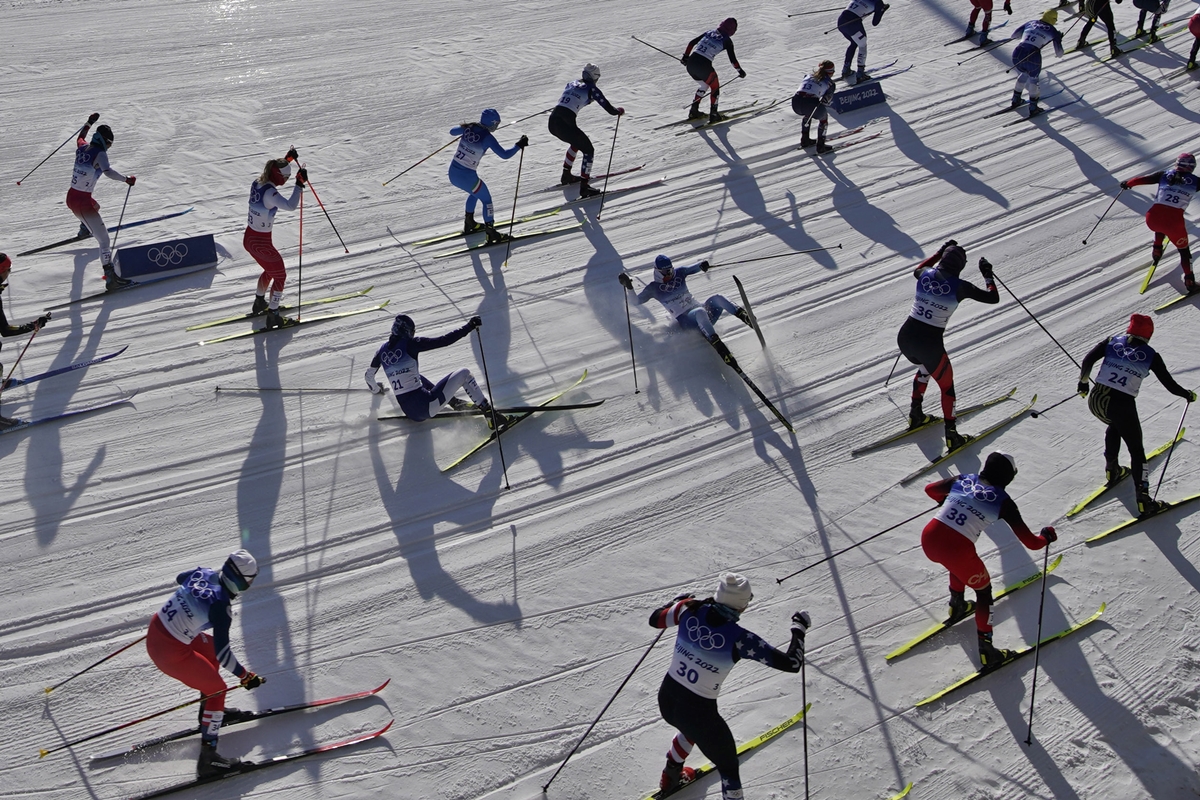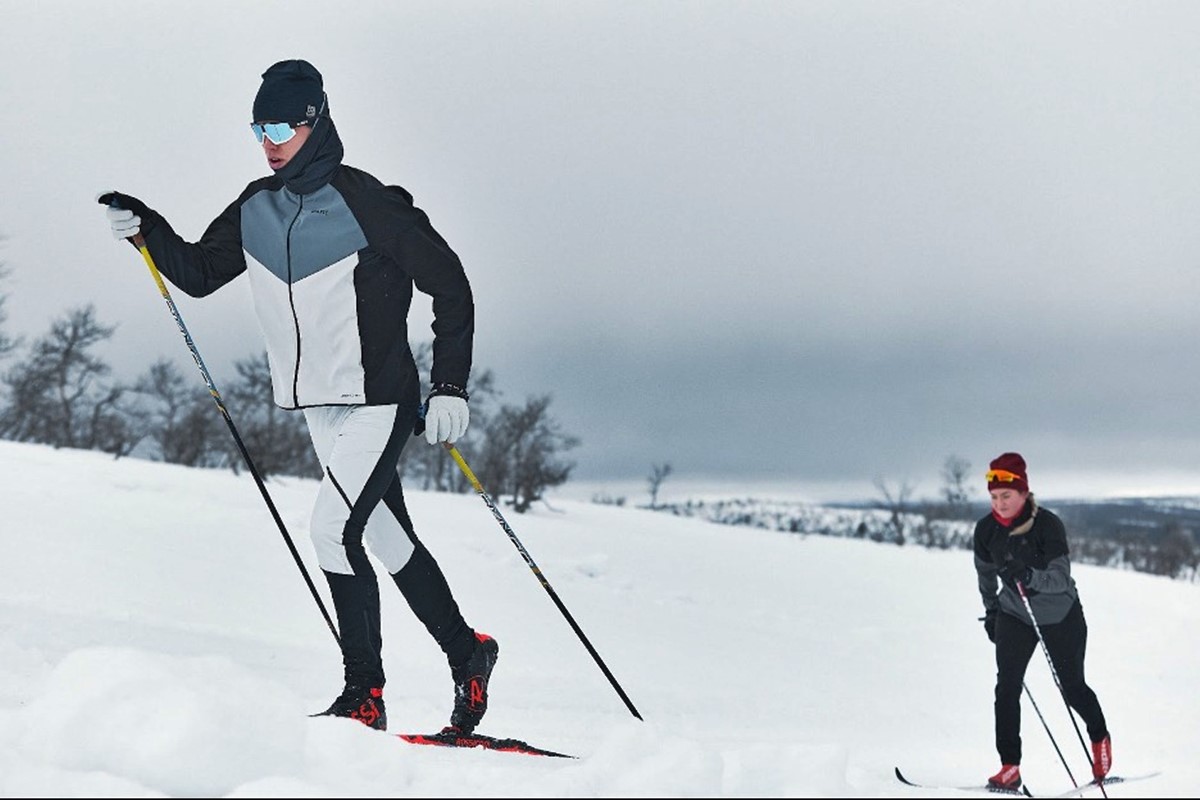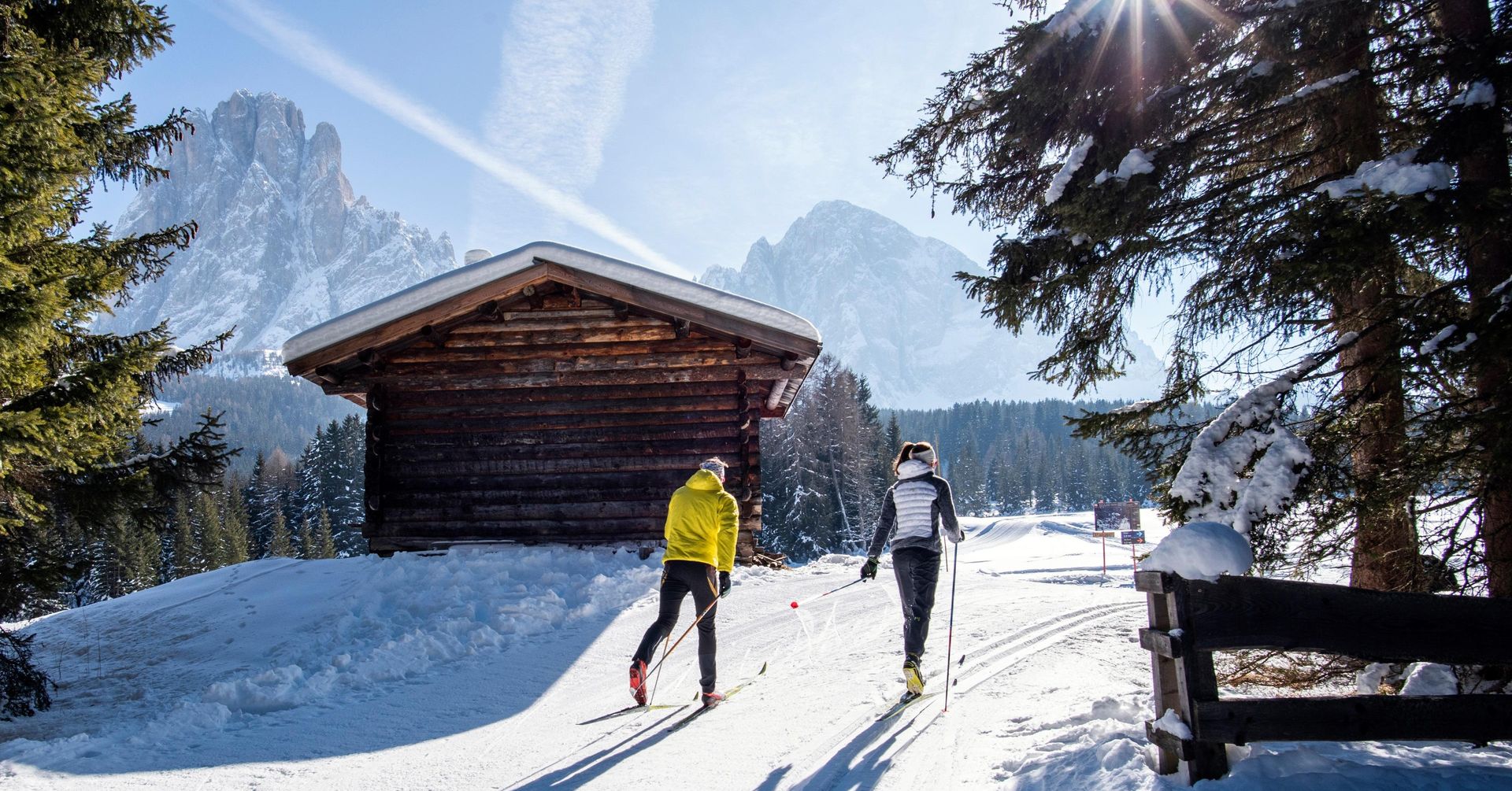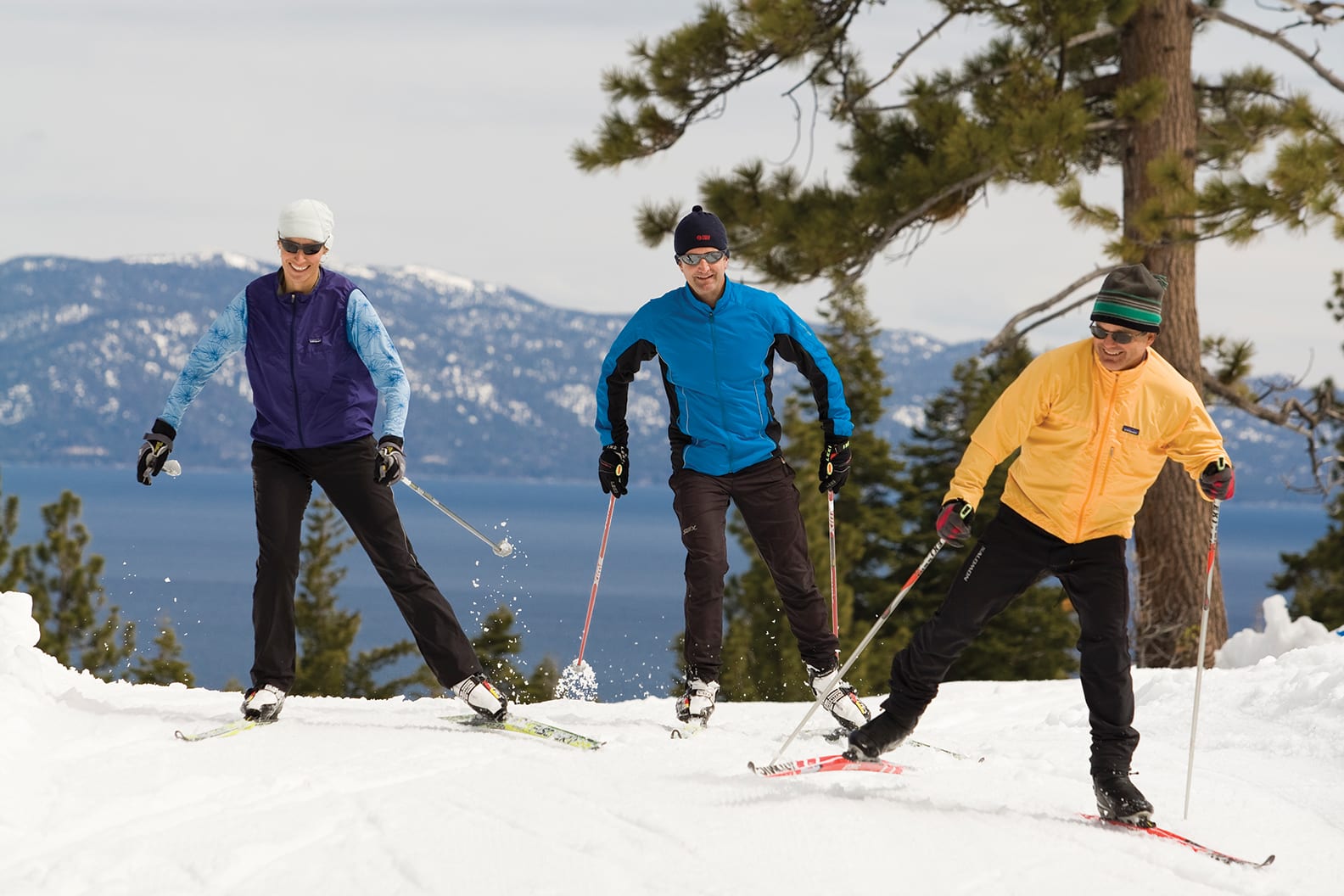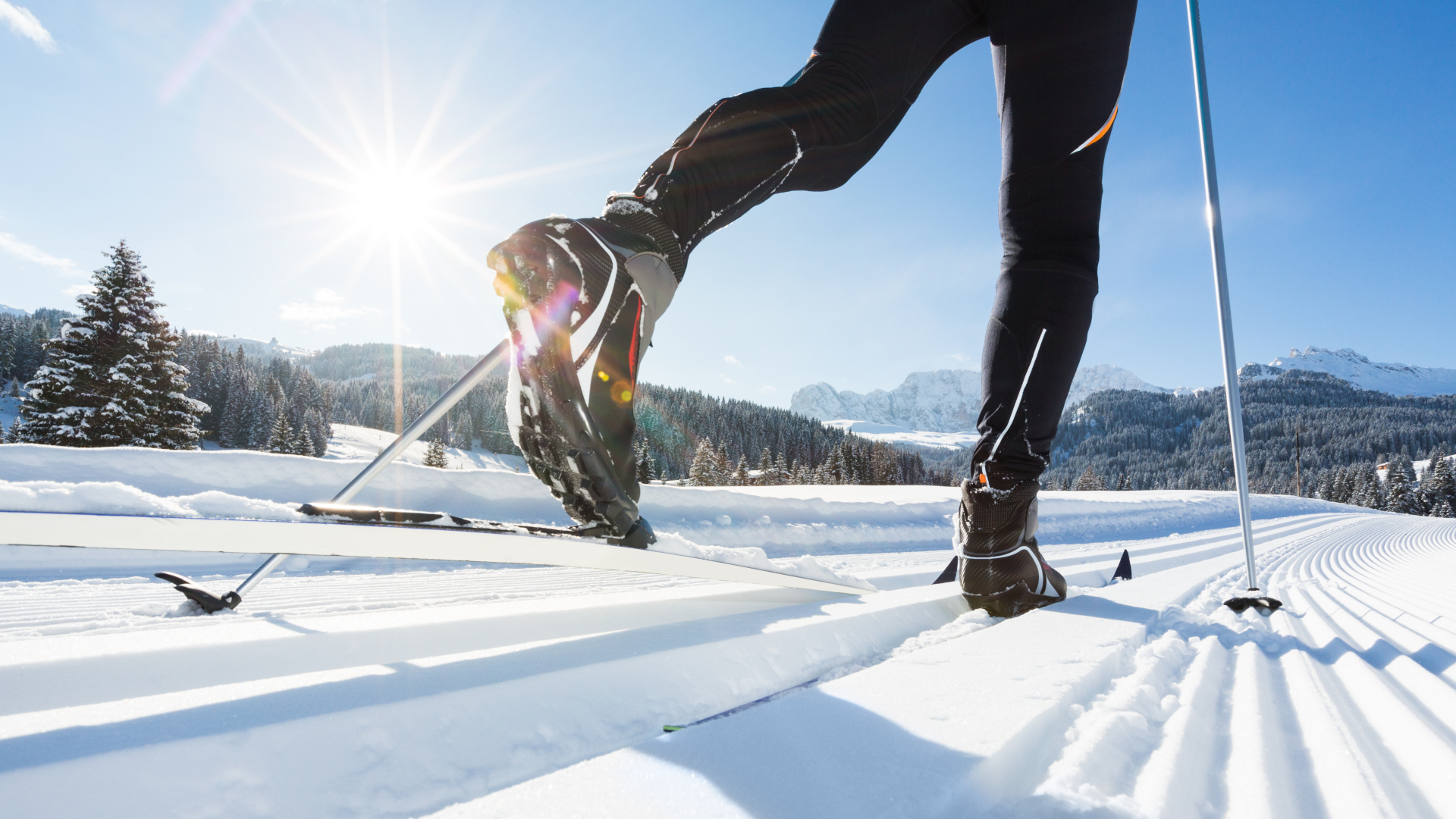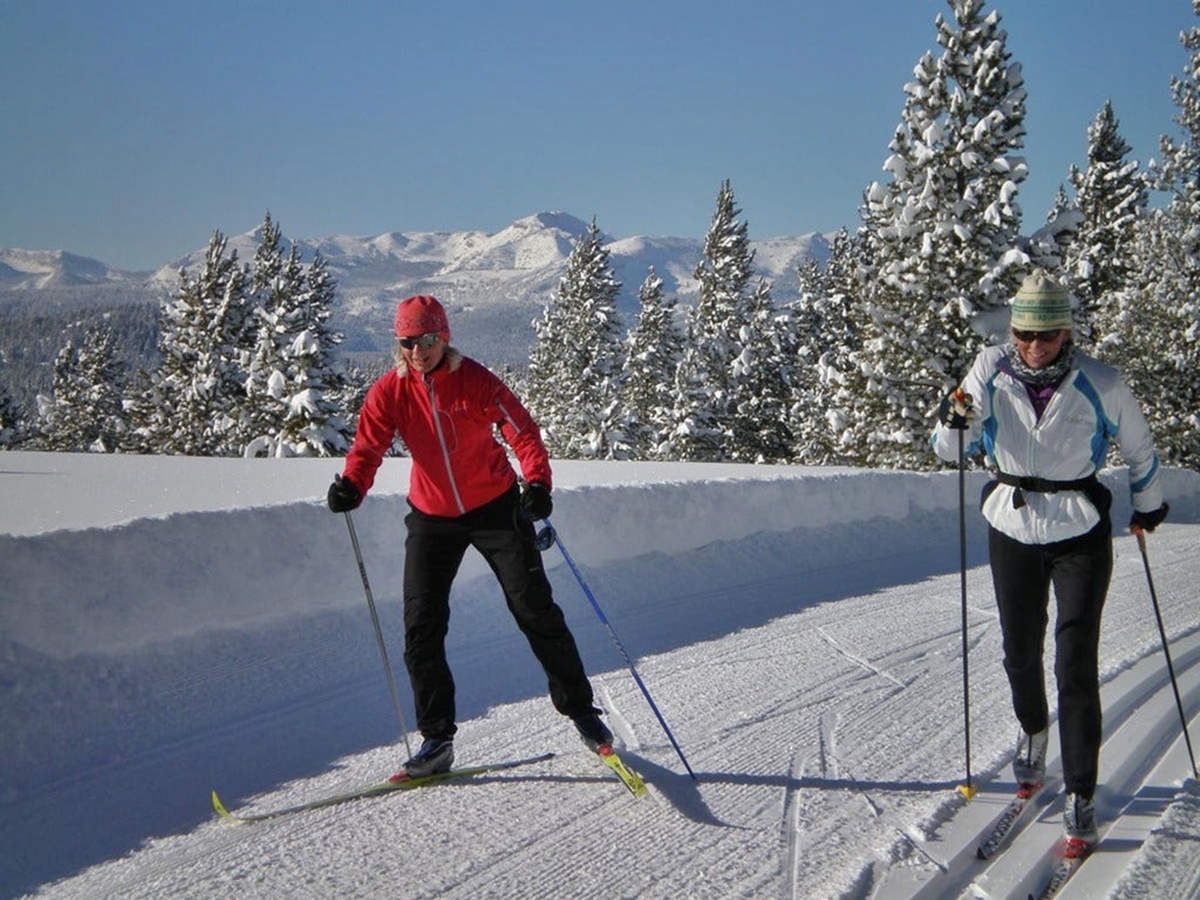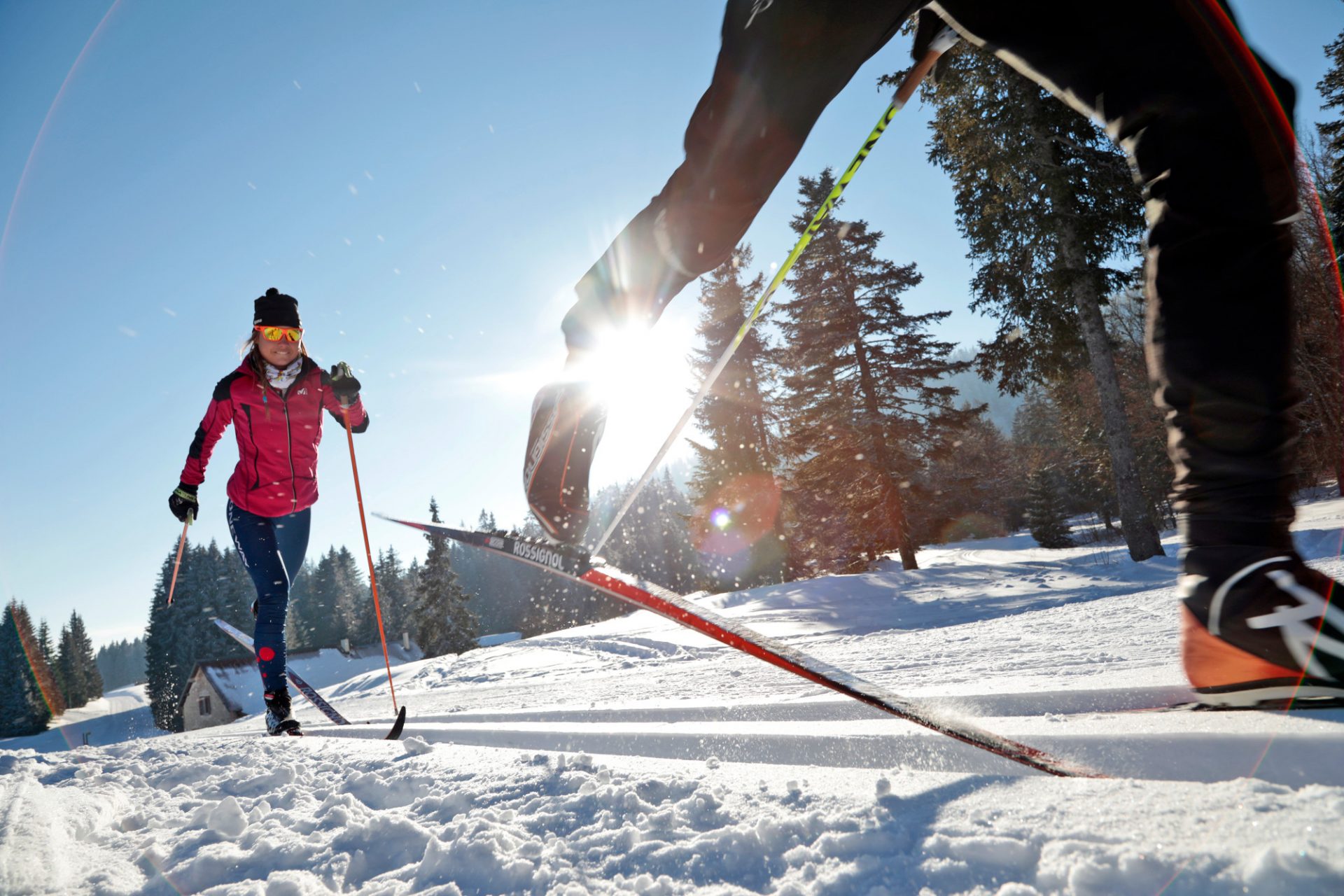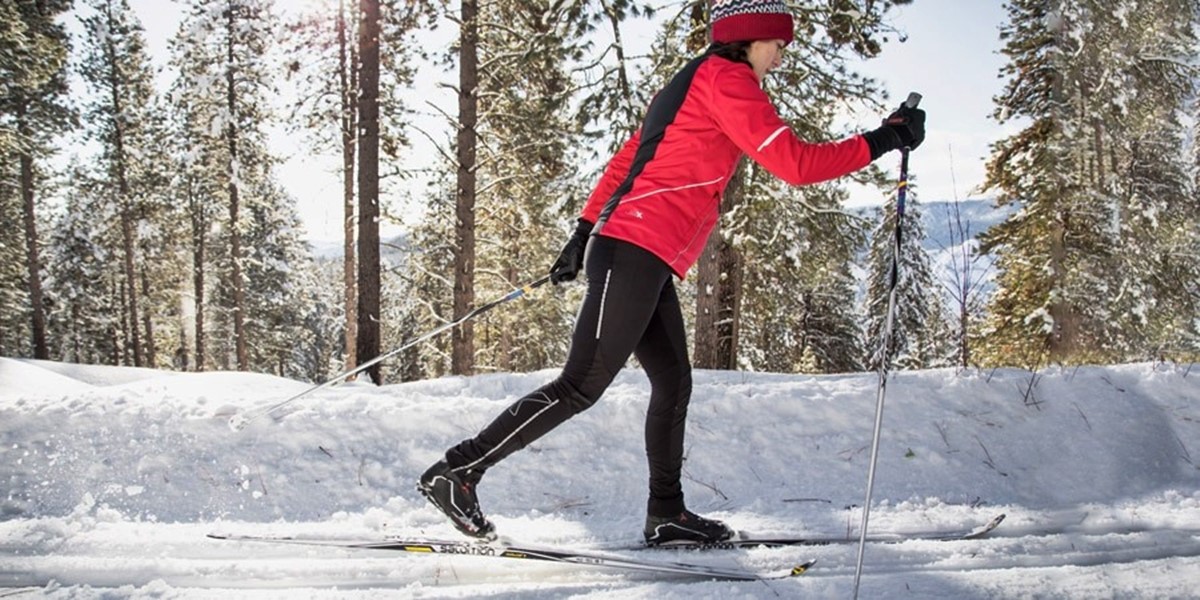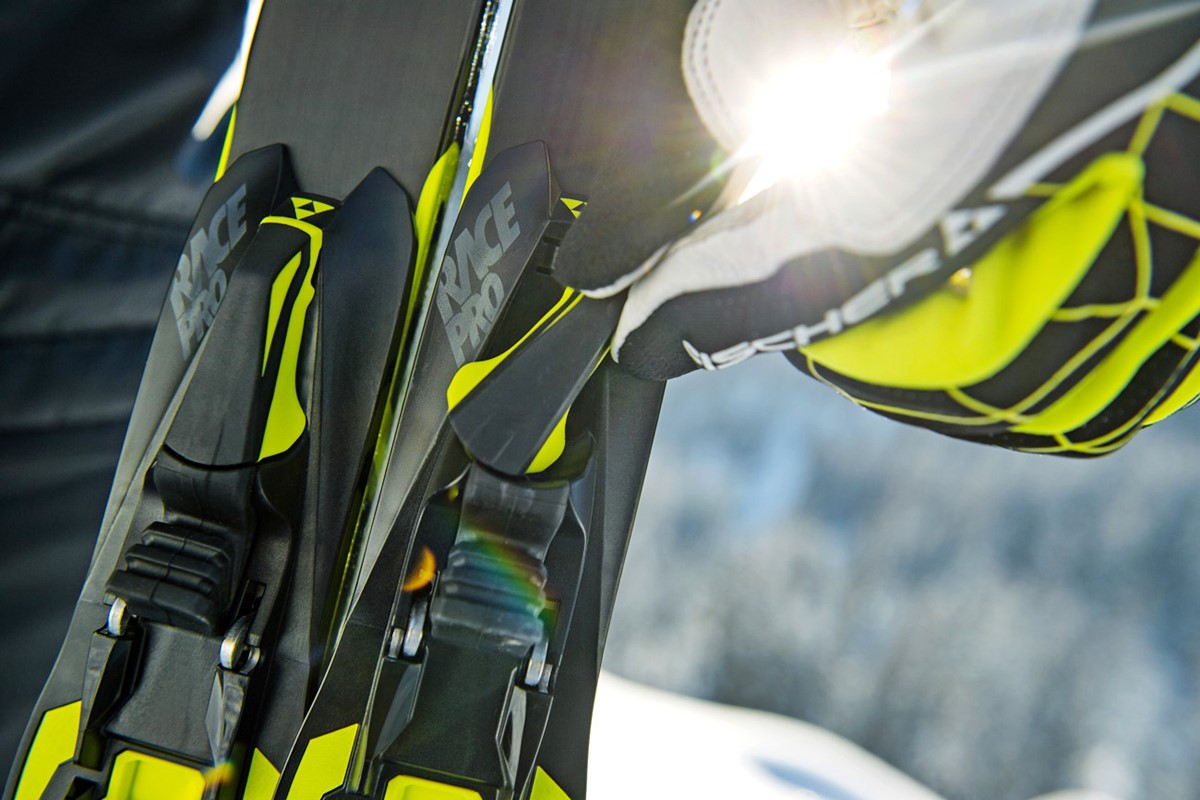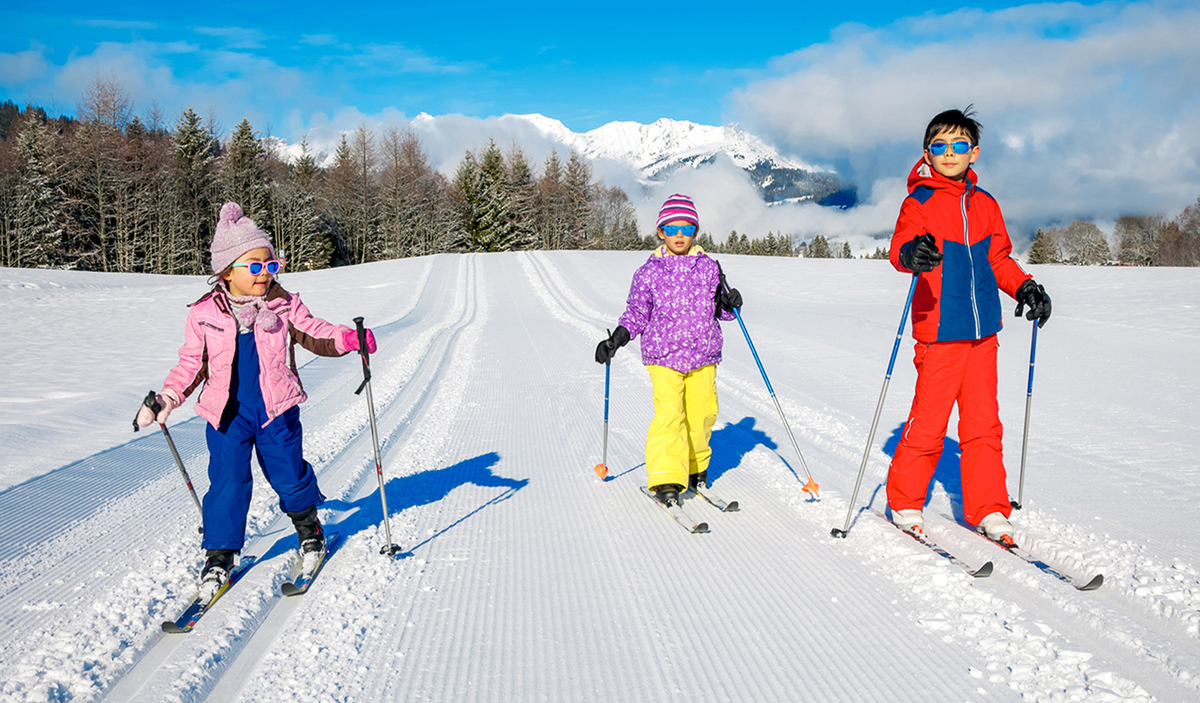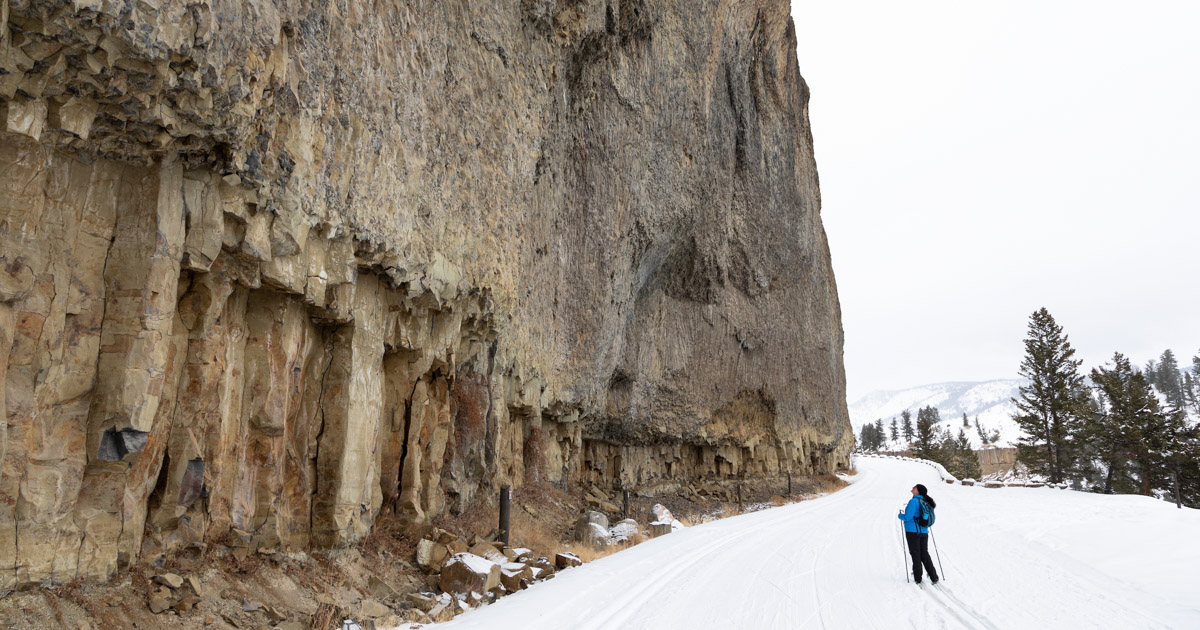

Featured
How To Cross Country Ski In Yellowstone
Modified: August 22, 2023
Discover the breathtaking beauty of Yellowstone National Park as you learn how to cross country ski. Join us for a featured adventure through the snowy landscapes and explore this iconic destination like never before.
Introduction
Welcome to the snowy wonders of Yellowstone National Park! If you’re looking for a thrilling and invigorating winter activity, cross country skiing is the perfect choice. Yellowstone’s vast, untouched landscapes provide the ideal backdrop for an unforgettable skiing adventure. Whether you are a seasoned skier or a beginner, Yellowstone offers a plethora of trails that cater to all levels of expertise.
Not only does cross country skiing allow you to immerse yourself in the pristine beauty of the park, but it also provides an excellent workout, combining cardiovascular exercise with the tranquility of nature. As you glide through the snow-covered forests and meadows, you’ll have the opportunity to spot wildlife, marvel at breathtaking panoramas, and enjoy the crisp mountain air.
In this comprehensive guide, we’ll walk you through the essentials of cross country skiing in Yellowstone. From getting started to selecting the right equipment and dressing appropriately for the winter conditions, we’ll cover everything you need to know to make the most of your experience.
Additionally, we’ll discuss important safety precautions and wildlife awareness to ensure your trip is enjoyable and memorable. By planning your route and familiarizing yourself with basic cross country skiing techniques, you’ll be well-prepared to explore Yellowstone’s winter wonderland and create cherished memories.
So, strap on your skis, grab your poles, and let’s dive into the snowy world of cross country skiing in Yellowstone National Park!
Getting Started
Before embarking on your cross country skiing adventure in Yellowstone, it’s important to familiarize yourself with a few key steps to ensure a smooth and enjoyable experience.
The first step is to determine your skiing abilities. If you’re a beginner, it’s advisable to start with easier trails that are well-groomed and relatively flat. This will allow you to practice your technique and build confidence before tackling more challenging terrain. Intermediate and advanced skiers can explore a wider range of trails that offer varying levels of difficulty.
Next, consider taking a cross country skiing lesson if you’re new to the sport or feel that your skills could use some improvement. Yellowstone offers lessons for all skill levels, from beginner to advanced. Instructors will teach you the proper technique, help you refine your skills, and provide valuable tips for navigating the park’s trails.
It’s also crucial to check the weather and trail conditions before heading out. Yellowstone’s winter weather can be unpredictable, so make sure to dress appropriately and be prepared for changing conditions. Additionally, keep in mind that some trails may be closed or have restricted access due to weather or wildlife activity. Check with park officials or visitor centers for up-to-date information.
Prior to your skiing adventure, ensure that you have the necessary permits or passes. Yellowstone requires visitors to purchase a park pass, which grants access to the park’s trails and facilities. This pass can be obtained online or at park entrances. Make sure to display your pass prominently to avoid any issues during your trip.
Finally, it’s essential to respect the park’s regulations and guidelines. Stay on designated trails, avoid disturbing wildlife, and follow any posted signs or warnings. Yellowstone is not only a stunning natural playground but also a delicate ecosystem that requires our protection and conservation.
By following these initial steps, you’ll be well on your way to a successful cross country skiing adventure in Yellowstone National Park.
Choosing the Right Equipment
When it comes to cross country skiing, having the right equipment is crucial for your comfort, safety, and overall enjoyment. Here are some key factors to consider when selecting your skiing gear for your Yellowstone adventure:
1. Skis: There are two main types of cross country skis: classic and skate. Classic skis are designed for traditional skiing techniques and perform well on groomed tracks. Skate skis, on the other hand, are shorter and stiffer, allowing for faster and more dynamic movements. Consider your skiing style and the type of terrain you’ll be encountering in Yellowstone to determine which style of ski is best suited for you.
2. Bindings: Bindings are what attach your boots to the skis. They come in various styles and designs, including NNN, SNS, and NIS. Make sure that the bindings you choose are compatible with your ski boots to ensure a proper fit and optimal performance.
3. Boots: Cross country ski boots should provide a comfortable and snug fit while providing support and flexibility. They should also be compatible with the bindings you choose. Try on different boots and walk around to ensure they are the right size and offer adequate ankle and arch support.
4. Poles: Ski poles help with balance, propulsion, and stability while skiing. The length of the poles should be appropriate for your height and skiing style. As a general rule, the poles should reach your armpits when standing upright with your arms extended down, but individual preferences may vary.
5. Clothing: Dressing in layers is key to staying warm and comfortable during your skiing adventure. Opt for moisture-wicking base layers, insulating middle layers, and a waterproof outer layer to protect against the elements. Don’t forget a hat, gloves, and sunglasses to shield yourself from the sun and wind.
6. Accessories: Consider additional accessories such as a backpack to carry water, snacks, and extra clothing layers. It’s also essential to bring sunscreen, lip balm, and a map or GPS device to navigate the trails.
Prior to your trip, visit a reputable outdoor retailer or consult with a cross country skiing expert to ensure you have the right equipment for your skill level and the specific conditions you’ll encounter in Yellowstone National Park. Renting equipment is also a viable option if you’re not ready to commit to purchasing your own gear.
With the right equipment, you’ll be well-equipped to take on the thrilling cross country ski trails of Yellowstone.
Dressing for Cross Country Skiing in Yellowstone
When venturing out into the snowy landscapes of Yellowstone for cross country skiing, dressing appropriately is essential to stay comfortable, warm, and protected from the elements. Here are some tips to help you dress for success:
1. Base Layers: Start with moisture-wicking base layers that will keep you dry and regulate your body temperature. Avoid cotton, as it retains moisture and can leave you feeling cold. Look for synthetic or merino wool materials that will effectively wick away sweat.
2. Insulating Layers: Add a mid-layer made of fleece or wool to provide warmth. This layer should be breathable and lightweight, allowing you to move freely while retaining heat.
3. Outer Layer: Wear a waterproof and windproof jacket and pants to protect against snow, wind, and moisture. Look for materials such as Gore-Tex or similar technologies that offer both breathability and protection from the elements.
4. Headwear: Keep your head warm with a snug-fitting hat or headband that covers your ears. This will help retain heat and prevent heat loss from your body’s core.
5. Gloves or Mittens: Choose gloves or mittens that are insulated, waterproof, and allow for dexterity. Consider bringing an extra pair in case one gets wet or if the weather becomes colder.
6. Socks: Wear moisture-wicking socks that are thin enough to provide a good fit with your ski boots. Avoid layering socks, as this can cause discomfort and restrict circulation.
7. Neck Protection: Protect your neck and face from cold winds by wearing a neck gaiter or a scarf. This will help prevent heat loss and keep you more comfortable during your skiing adventure.
8. Sunglasses or Goggles: Protect your eyes from the sun’s glare and potential snow reflection by wearing sunglasses or ski goggles. Choose lenses that offer adequate UV protection and enhance visibility in different light conditions.
9. Sunscreen and Lip Balm: Don’t forget to apply sunscreen and lip balm with SPF to protect exposed skin from the intense winter sun. Even on cloudy days, the sun’s rays can be harmful at higher altitudes.
Remember that weather conditions in Yellowstone can change rapidly. Check the forecast before heading out and adjust your clothing layers accordingly. It’s better to be prepared for colder temperatures and remove layers if needed, rather than being underdressed.
By dressing appropriately, you’ll be able to fully enjoy the beauty of Yellowstone while staying warm, comfortable, and protected during your cross country skiing adventures.
Safety Precautions
While cross country skiing in Yellowstone National Park is an exhilarating and enjoyable experience, it’s important to prioritize safety to ensure a smooth and incident-free adventure. Here are some key safety precautions to keep in mind:
1. Know your limits: Be aware of your skiing abilities and choose trails that are suitable for your skill level. It’s important to challenge yourself but also to ski within your comfort zone to avoid accidents or injuries.
2. Carry essential safety equipment: Bring a trail map, compass, and a GPS device if possible, to help you navigate the park’s vast trails. Additionally, pack a first aid kit, emergency whistle or signal mirror, headlamp or flashlight, and a multi-tool in case of emergencies.
3. Stay on designated trails: Yellowstone has a network of marked trails specifically designated for cross country skiing. Stay on these trails and avoid venturing into restricted areas or off-trail areas to protect fragile ecosystems and reduce the risk of accidents.
4. Be aware of other skiers: Pay attention to other skiers on the trails and maintain a safe distance to avoid collisions. Yield to uphill skiers and those who are moving faster than you. It’s important to be courteous and share the trails with others.
5. Wildlife awareness: Yellowstone is home to a diverse range of wildlife, including bison, elk, wolves, and bears. Be alert and cautious when skiing in areas frequented by wildlife. Give animals plenty of space and do not approach or disturb them. If you encounter a bear, stay calm, back away slowly, and make lots of noise to alert the bear of your presence.
6. Dress appropriately: Dress in layers to adapt to changing weather conditions. Avoid overdressing or underdressing to prevent overheating or hypothermia. Be prepared for strong winds and sudden weather changes, as conditions in Yellowstone can be unpredictable.
7. Stay hydrated and fueled: Carry plenty of water and high-energy snacks to keep yourself hydrated and fueled during your skiing excursion. Maintain proper nutrition to sustain your energy levels and prevent fatigue.
8. Check for trail and weather conditions: Before heading out, check the latest trail and weather conditions in Yellowstone. This information can be obtained from visitor centers, park rangers, or online resources. Adjust your plans accordingly to ensure a safe and enjoyable experience.
By following these safety precautions, you can have a memorable and safe cross country skiing adventure in Yellowstone National Park. Remember that personal safety is your responsibility, and it’s important to prioritize your well-being and the conservation of this pristine wilderness.
Planning Your Route
Planning your route ahead of time is essential to make the most of your cross country skiing experience in Yellowstone National Park. Here are some tips to help you plan your route effectively:
1. Research trail options: Yellowstone offers a wide range of trails for cross country skiing, each with its own unique scenery and difficulty level. Research and familiarize yourself with the available trails, their length, elevation gain, and terrain characteristics. Choose trails that align with your skiing abilities and preferences.
2. Consider time and distance: Determine how much time you have available for skiing and plan your route accordingly. Take into account the distance of the trail, the speed at which you ski, and any potential stops or breaks along the way. It’s better to plan for slightly less distance than to feel rushed or run out of time.
3. Check trail closures and conditions: Before finalizing your route, check for any trail closures or restrictions that might be in place due to weather, wildlife activity, or other factors. Visit the park’s official website or contact the visitor centers for up-to-date information on trail conditions and closures.
4. Know the trail difficulty: Take note of the difficulty level of the trails you plan to ski. Some trails are suitable for beginners or families, while others may be more challenging and require advanced skiing skills. Be realistic about your abilities and choose trails that match your skill level.
5. Plan for elevation changes: Consider the elevation changes along your chosen route. Some trails in Yellowstone have significant elevation gains, which may affect the duration and effort required for the ski. Factor in the ascent and descent when planning your timing and energy expenditure.
6. Assess the weather forecast: Keep an eye on the weather forecast for the duration of your skiing trip. Know the expected temperature, wind conditions, and potential storms or snowfall. Adjust your plans accordingly and dress appropriately for the weather conditions you might encounter.
7. Share your plans: Before heading out, inform someone reliable about your skiing plans, including the route you intend to take and your estimated time of return. This ensures that someone is aware of your whereabouts and can alert the authorities in case of an emergency.
8. Carry a map and navigation tools: Bring a detailed trail map of the area and consider using a GPS device or smartphone app for navigation. Familiarize yourself with the trail markings and signs to stay on the correct path. This will help prevent getting lost and ensure a smooth skiing experience.
By carefully planning your route, taking into account trail difficulty, weather conditions, and personal abilities, you’ll be able to enjoy a well-prepared and satisfying cross country skiing adventure in Yellowstone National Park.
Cross Country Skiing Techniques
Mastering the proper cross country skiing techniques is essential for maximizing your efficiency, speed, and enjoyment on the trails of Yellowstone National Park. Here are some key techniques to help you improve your skiing skills:
1. Diagonal Stride: The diagonal stride is the most basic and commonly used technique in cross country skiing. Push off with one ski while gliding forward on the opposite ski. Use your poles to propel yourself forward, alternating arm and leg movements in a synchronized manner. Focus on weight transfer and balance to maintain a smooth and efficient stride.
2. Double Poling: Double poling is a technique used primarily on flat or slightly downhill sections. Plant both poles in front of you and use your upper body strength to push off and propel yourself forward. Coordinate the timing of your pole plants with your leg push-off to generate more power and speed.
3. Kick and Glide: This technique is commonly used in classic skiing. “Kick” refers to the action of pressing the grip zone of your ski against the snow, while “glide” is the smooth forward movement that follows. Proper weight transfer, timing, and grip wax selection are crucial for achieving an effective kick and seamless glide.
4. Herringbone: The herringbone technique is useful for ascending steep hills. Angle your skis outward in a V-shape, with the tails positioned wider than the tips. Plant your poles and push outwards, allowing the inside edges of your skis to grip the snow. Take small steps and engage your core muscles to maintain balance and stability.
5. Step Turn: The step turn technique allows you to navigate tight corners and obstacles. To execute a step turn, shift your weight onto one ski and step with the other ski, rotating your body in the desired direction. Use your poles for balance and assist in the turning motion. Practice this technique in a controlled environment before attempting it on more challenging terrain.
6. Skate Skiing: If you’re using skate skis, learning proper skate skiing techniques is essential. Push off with a diagonal stride on one ski while simultaneously pushing off with the opposite arm. Transfer your weight from side to side in a skating motion, similar to ice skating. Develop a rhythmic and coordinated movement to maximize speed and efficiency.
7. Uphill Techniques: When skiing uphill, use a combination of techniques, such as herringbone, double poling, and the diagonal stride. Shorten your stride, focus on weight transfer, and use your poles and core muscles for added power. Take small steps to maintain control and conserve energy.
8. Downhill Techniques: When skiing downhill, maintain control and balance by keeping your weight centered and slightly forward. Use your poles for balance and as a braking mechanism. Practice snowplowing and side stepping to control your speed on steeper descents.
Remember, mastering cross country skiing techniques takes time and practice. Consider taking lessons or skiing with more experienced skiers to improve your skills. By honing these techniques, you’ll enhance your overall skiing experience and be able to tackle a variety of trails in Yellowstone National Park.
Wildlife Awareness
One of the unique aspects of cross country skiing in Yellowstone National Park is the opportunity to encounter various forms of wildlife in their natural habitat. However, it’s crucial to practice wildlife awareness and take appropriate precautions to ensure both your safety and the well-being of the animals. Here are some important guidelines to follow:
1. Maintain a safe distance: When you come across wildlife while skiing, keep a respectful distance. Use binoculars or a zoom lens on your camera to observe animals closely without disturbing them. A general rule of thumb is to stay at least 25 yards (23 meters) away from most wildlife and 100 yards (91 meters) away from predators like wolves and bears.
2. Do not approach or feed wildlife: It is essential to never approach or attempt to feed wildlife. Feeding animals can disrupt their natural behaviors, alter their diet, and create dependency on human food, which can be harmful to their health and safety. Remember, these are wild animals, and human interference can have adverse effects on their natural existence.
3. Be cautious of signs of aggression or stress: While most wildlife will usually avoid human encounters, it’s important to be vigilant and recognize signs of aggression or stress. If an animal shows signs of agitation, flares its ears, lowers its head, or displays defensive postures, slowly back away to give it space. Do not approach animals that are protecting their young or exhibiting aggressive behaviors.
4. Stay on designated trails: Stick to designated cross country skiing trails and avoid venturing into areas that are known to have high wildlife activity or are restricted for conservation purposes. This reduces the risk of disturbing animals or their habitats, ensuring their continued well-being.
5. Carry bear spray and know how to use it: If you’re skiing in areas where bears are known to inhabit, carry bear spray and familiarize yourself with how to use it effectively. While bear encounters are rare, being prepared and knowledgeable about bear safety can provide peace of mind.
6. Make noise to alert wildlife of your presence: To minimize surprise encounters, make noise as you ski to alert wildlife to your presence. Talking, singing, or using bear bells can help prevent surprising animals, reducing the chances of startling them.
7. Report any wildlife sightings or incidents: If you witness any wildlife-related incidents or observations, report them to park authorities or rangers. This information contributes to the overall understanding and conservation efforts in the park.
Remember, wildlife encounters are a privilege in Yellowstone, and it’s our responsibility to preserve and protect these precious resources. By practicing wildlife awareness and respecting the animals’ space, we can ensure a harmonious coexistence between humans and wildlife during our cross country skiing adventures.
Enjoying the Scenery
Cross country skiing in Yellowstone National Park offers a mesmerizing opportunity to immerse yourself in breathtaking natural landscapes. As you glide through the trails, take the time to appreciate and enjoy the stunning scenery. Here are some tips for fully embracing the beauty of Yellowstone while skiing:
1. Pause and take in the views: Along your skiing route, find spots to pause and soak in the magnificent vistas. Take a moment to observe the snow-capped mountains, the vast open meadows, or the serenity of a frozen lake. Allow yourself to be fully present in these awe-inspiring surroundings.
2. Capture memories with your camera: Bring a camera or smartphone to capture the enchanting beauty of Yellowstone. Photograph the snow-covered trees, the frosty landscapes, or even a fleeting glimpse of wildlife. Just remember to prioritize the well-being of the animals and maintain a respectful distance while photographing.
3. Marvel at the winter wildlife: Yellowstone is home to a rich variety of wildlife, and winter is an excellent time to observe them in their natural environment. Keep an eye out for bison, elk, coyotes, and even majestic wolves. But always remember to observe from a safe distance and respect their space.
4. Connect with the sounds of nature: As you ski through the park, take a moment to appreciate the peacefulness and tranquility of the winter landscape. Listen to the crunch of the snow beneath your skis, the soft whisper of the wind through the trees, and the occasional call of birds. Embrace the serenity and let these sounds reconnect you with nature.
5. Embrace the winter serenity: The winter months transform Yellowstone into a magical wonderland. The serene white landscapes, the sparkling frost on the trees, and the stillness of the surroundings create a unique atmosphere. Allow yourself to be present in the quiet solitude of the winter and savor the sense of peacefulness it brings.
6. Seek out unique landmarks: Yellowstone is filled with iconic landmarks that are simply awe-inspiring during the winter season. Ski to the edge of the Grand Canyon of the Yellowstone and admire the frozen Lower Falls, or venture to the steamy geysers and hot springs at places like Old Faithful. These natural wonders offer a glimpse into the park’s remarkable geothermal activity.
7. Enjoy a picnic or hot drink: Take a break from skiing and find a cozy spot to enjoy a picnic surrounded by nature. Pack a thermos of hot cocoa or tea to warm up while marveling at the surrounding beauty. It’s a wonderful opportunity to refuel, rest, and fully immerse yourself in your surroundings.
Remember, while it’s important to appreciate and enjoy the scenery, always prioritize your safety and that of the wildlife and environment around you. Ski responsibly, follow park regulations, and leave no trace behind.
By embracing the scenery and taking in the natural wonders of Yellowstone, your cross country skiing experience will be enriched as you create lasting memories of this remarkable national park.
Conclusion
Cross country skiing in Yellowstone National Park is a truly remarkable experience that combines the thrill of outdoor adventure with the serenity of the winter wilderness. From the moment you strap on your skis and glide through the pristine landscapes, you’ll be captivated by the beauty that surrounds you.
In this comprehensive guide, we’ve covered the essential aspects of cross country skiing in Yellowstone, from getting started and choosing the right equipment to dressing appropriately for the winter conditions. We’ve highlighted the importance of safety precautions and wildlife awareness to ensure a safe and respectful interaction with the park’s diverse ecosystem. Additionally, we’ve provided insights on planning your route, mastering cross country skiing techniques, and enjoying the breathtaking scenery.
As you embark on your skiing adventure in Yellowstone, remember the significance of this natural wonderland. Treat it with respect, embrace responsible skiing practices, and contribute to the preservation of this extraordinary environment. By doing so, you’re not only enhancing your own experience but also playing a vital role in conserving Yellowstone for future generations to enjoy.
So, gather your gear, prepare to explore the magnificent trails, and immerse yourself in the wonders of Yellowstone through the exhilarating sport of cross country skiing. Witness the snowy landscapes, spot wildlife in their natural habitat, and create lasting memories of this extraordinary national park.
Let the crisp mountain air, the glistening snow, and the silent beauty of Yellowstone inspire and invigorate you as you carve your way through this winter wonderland.
